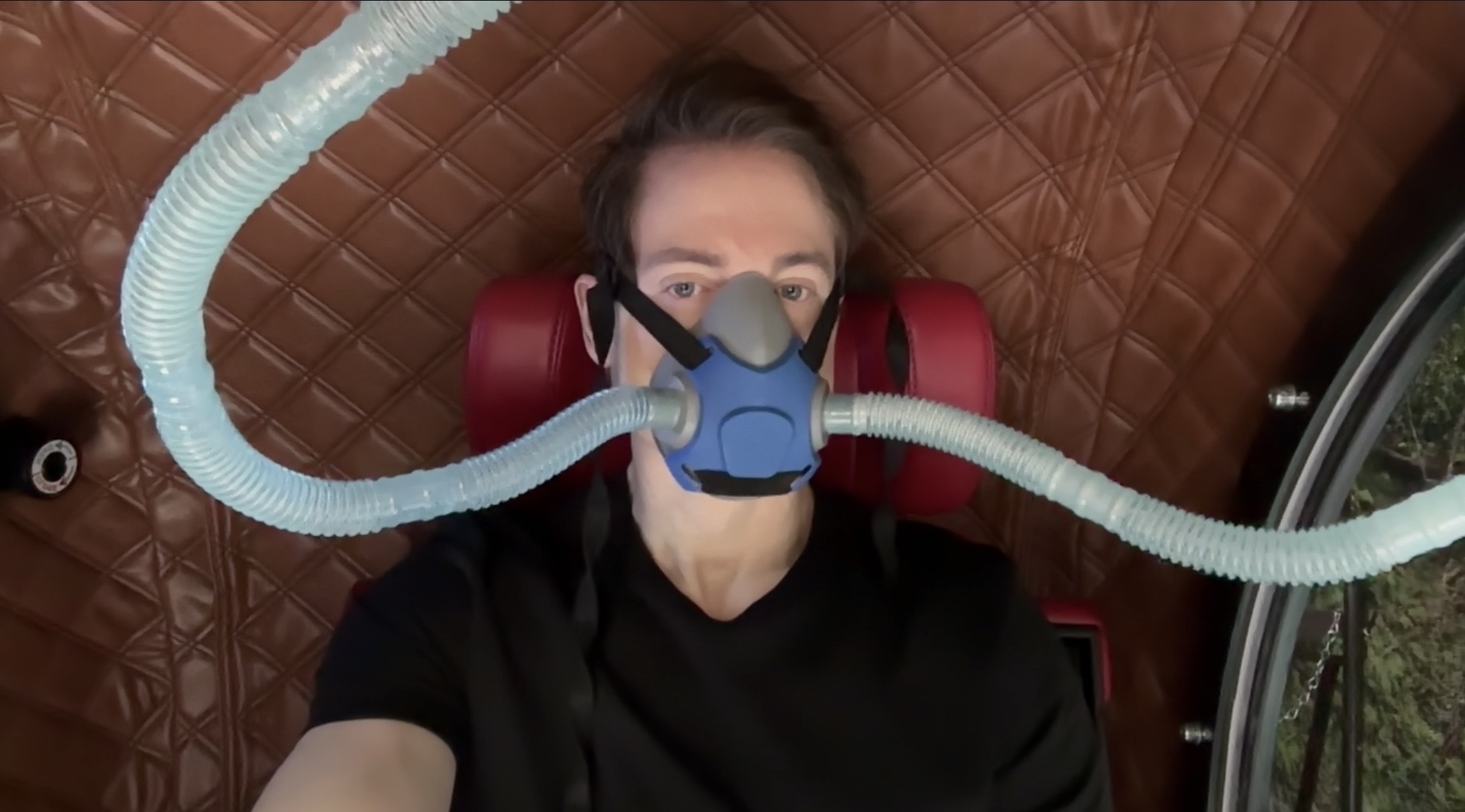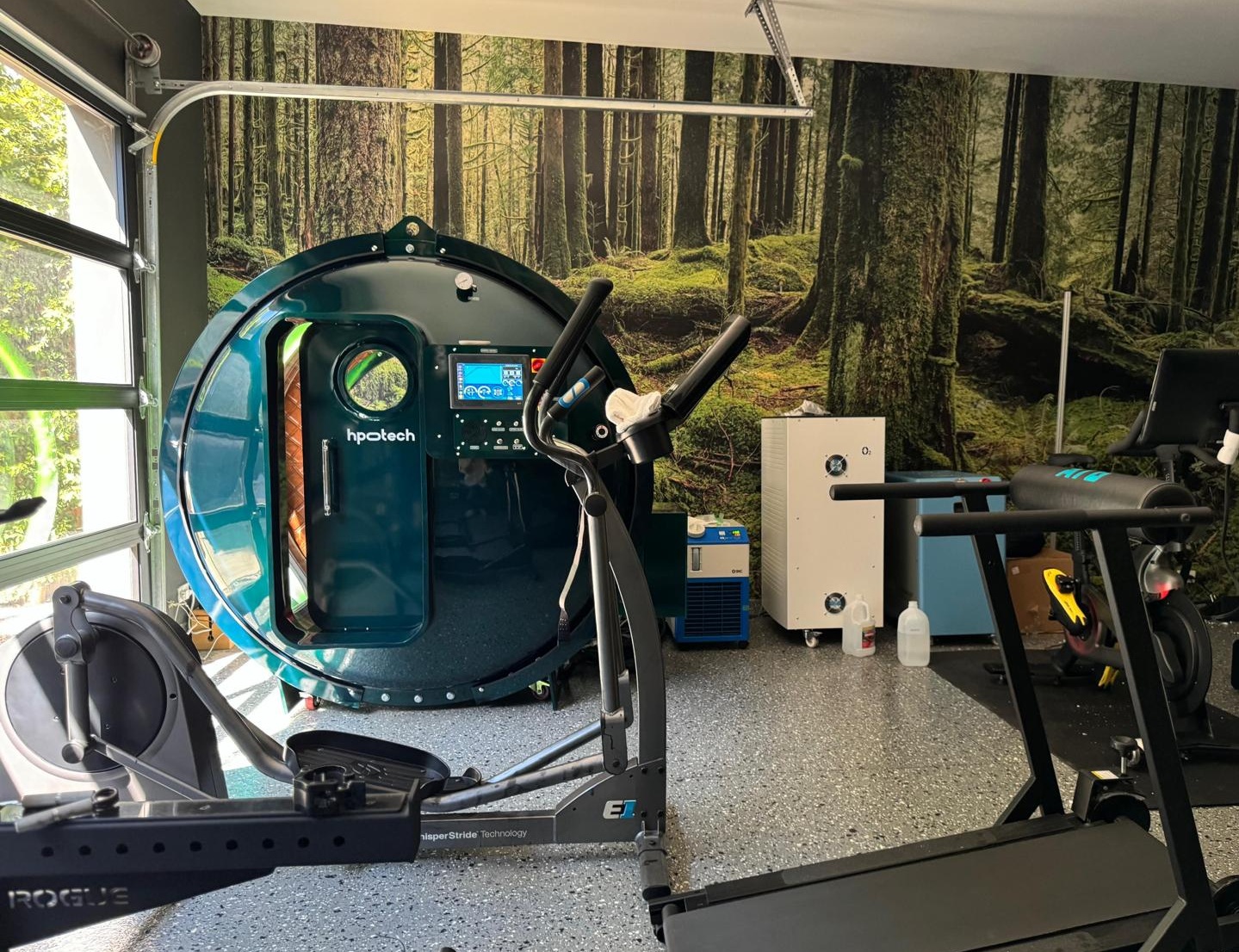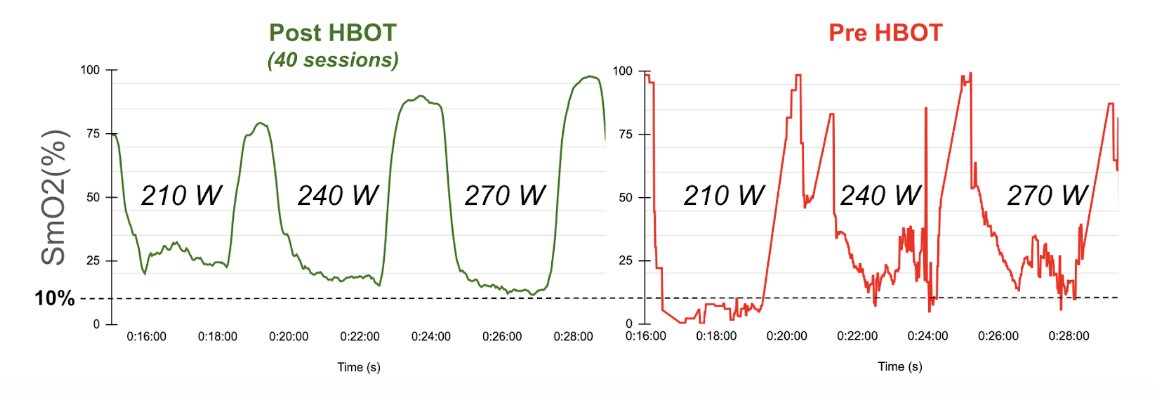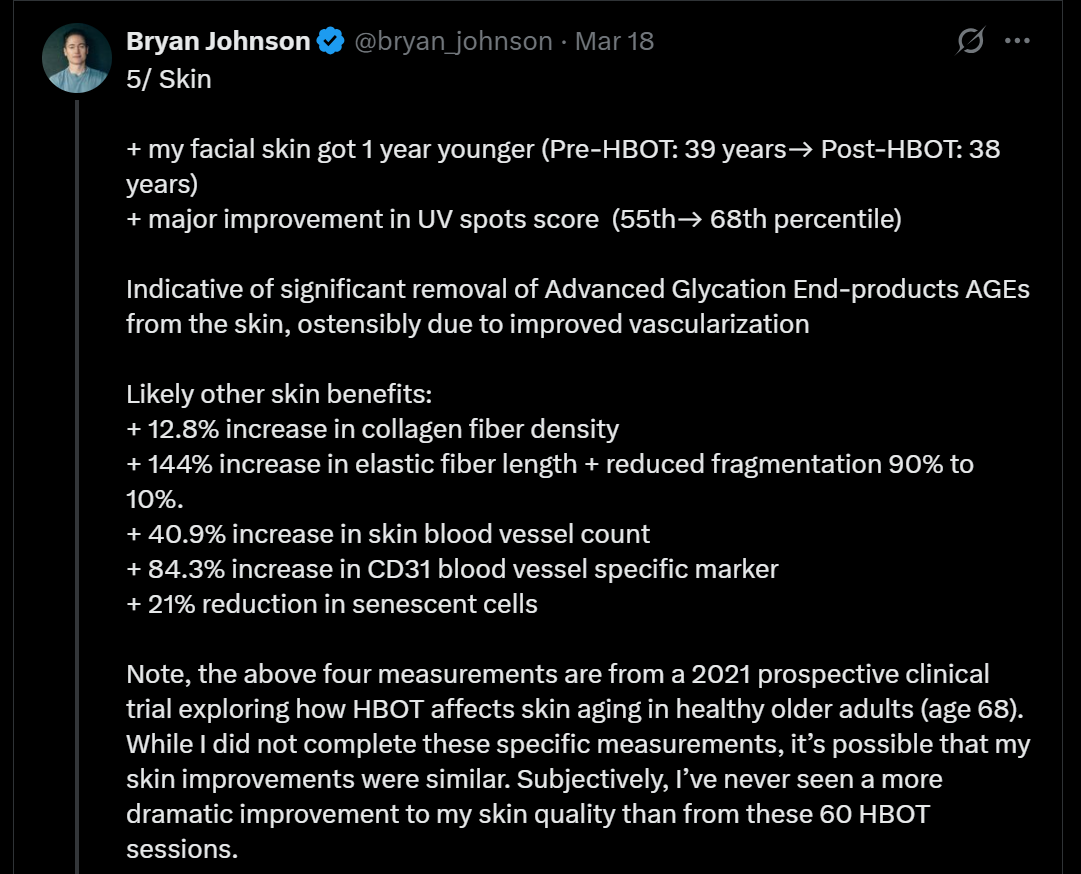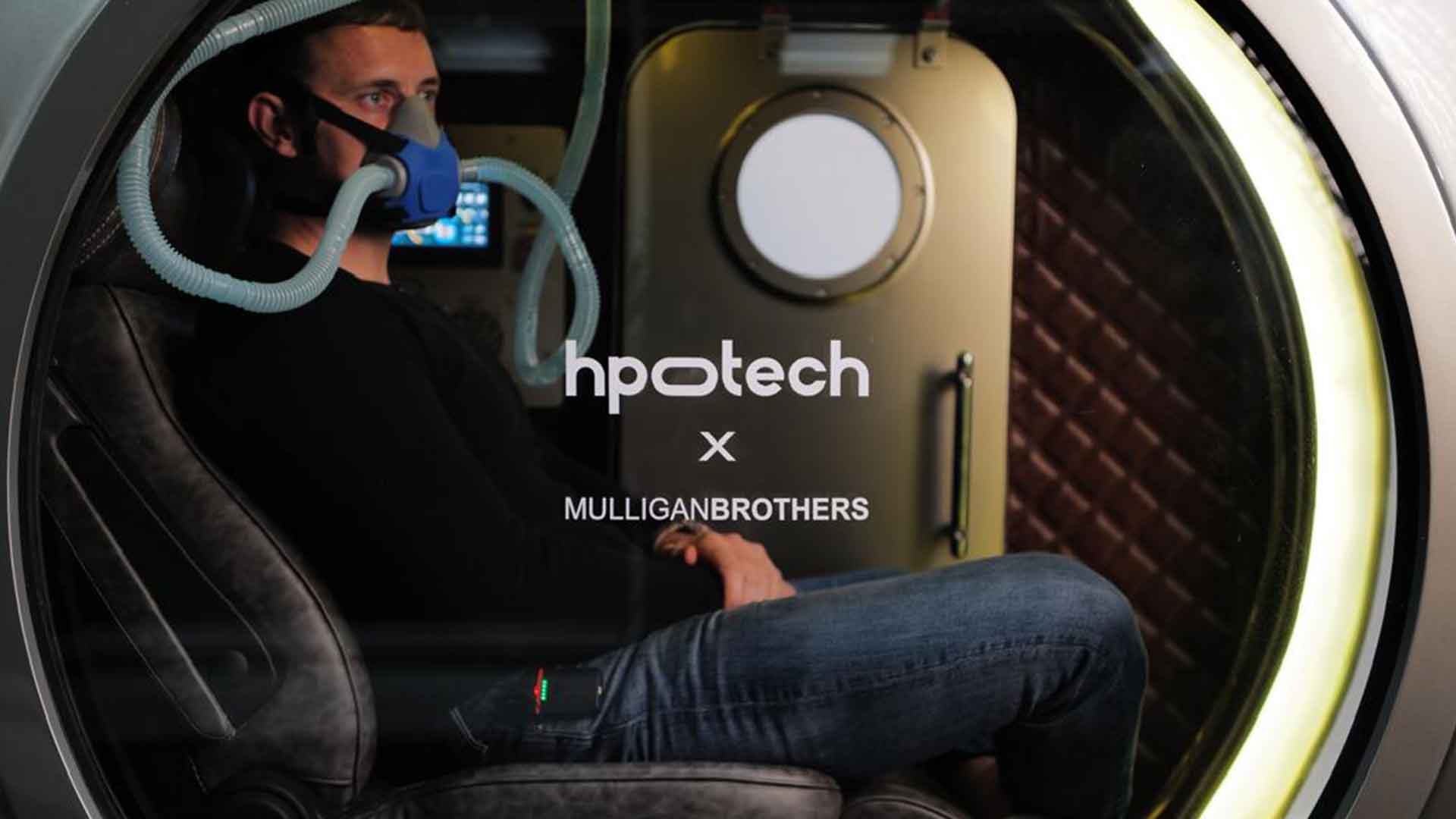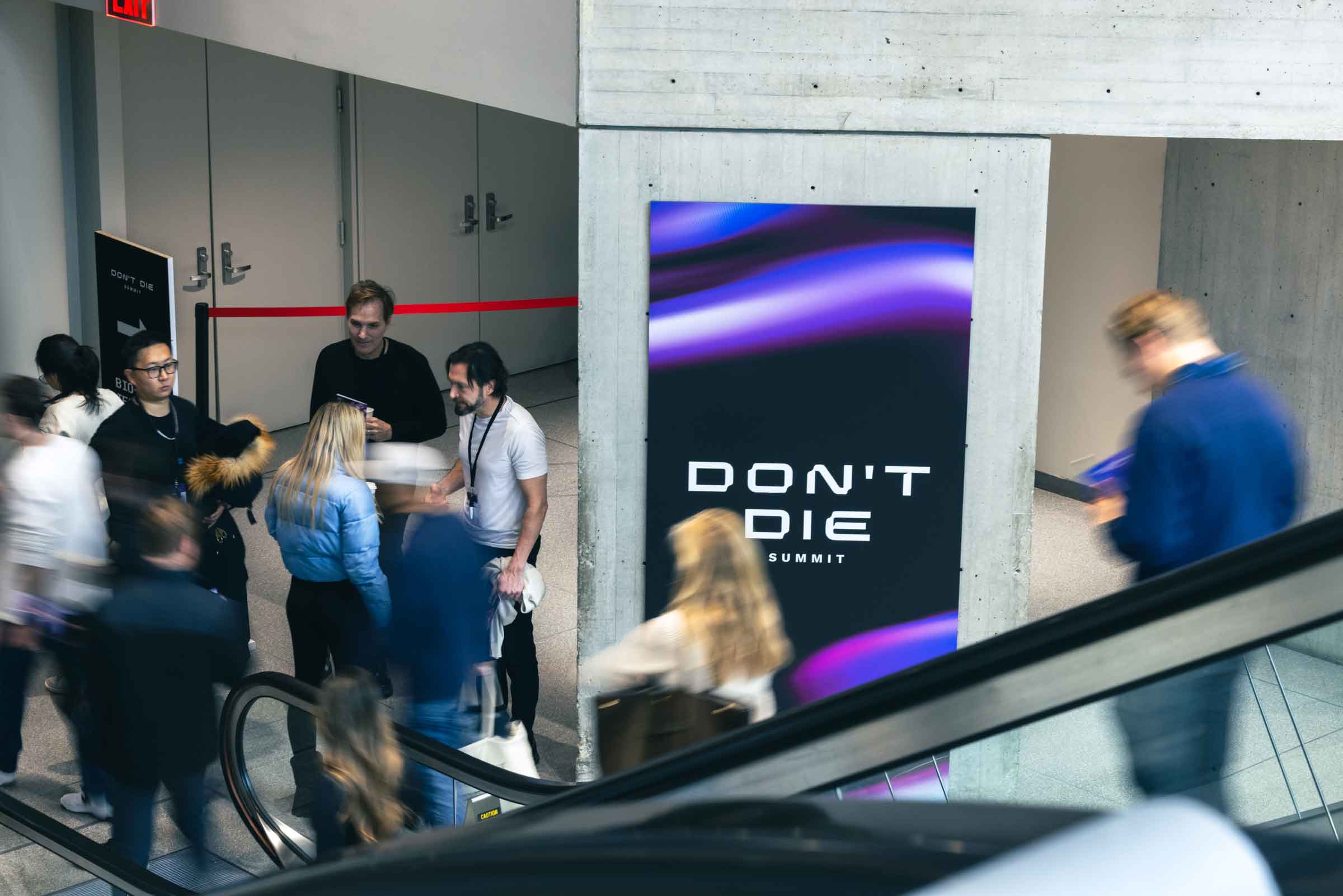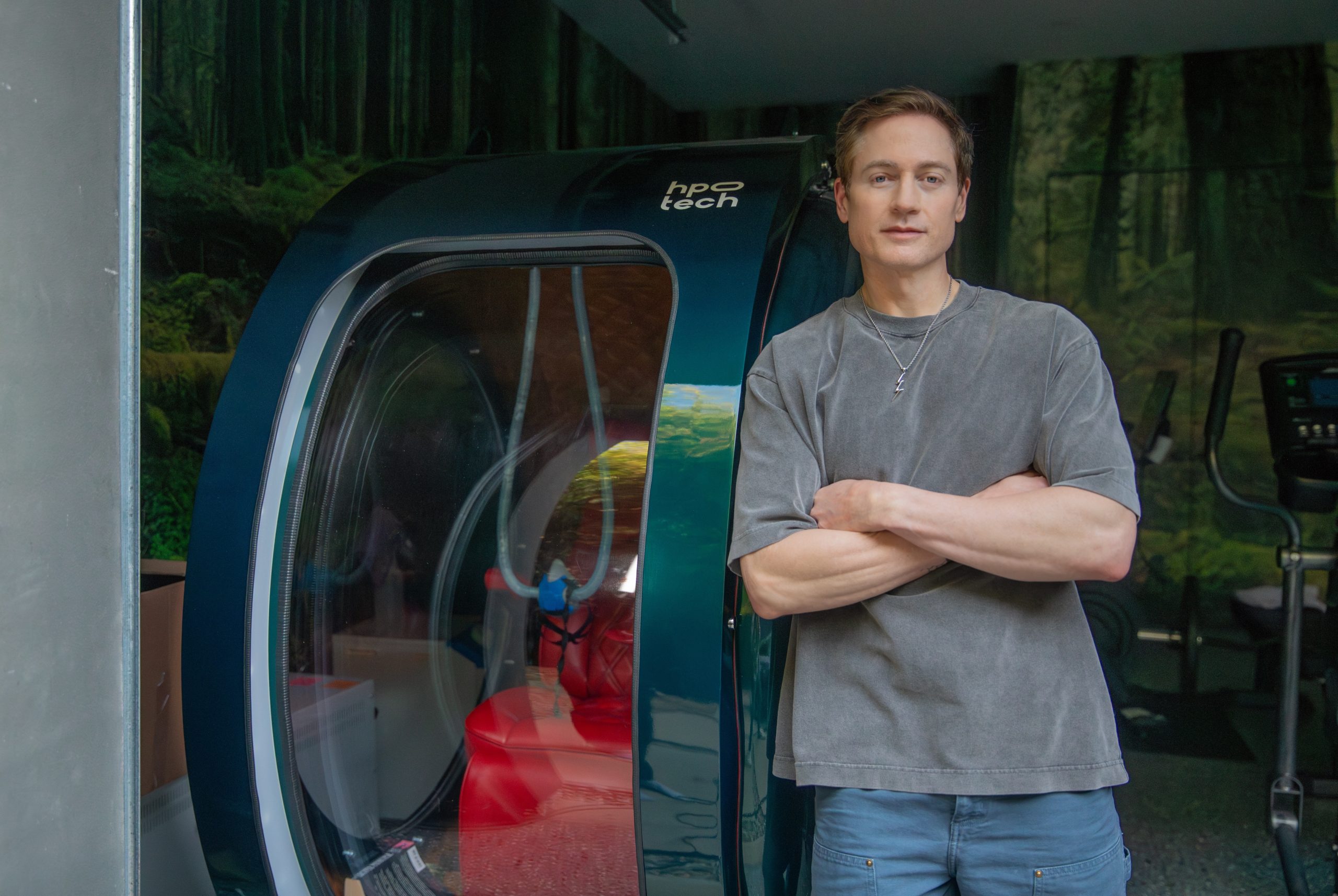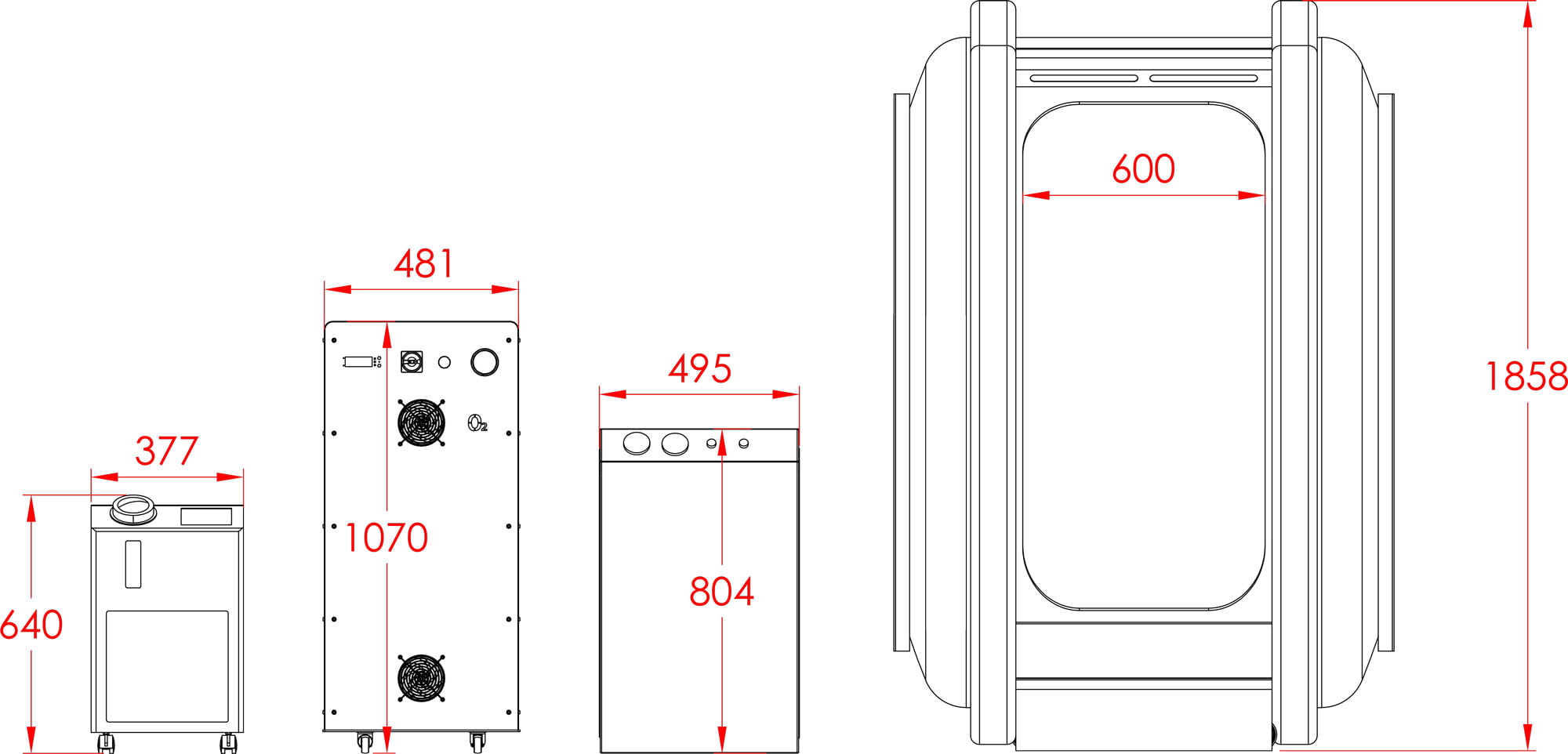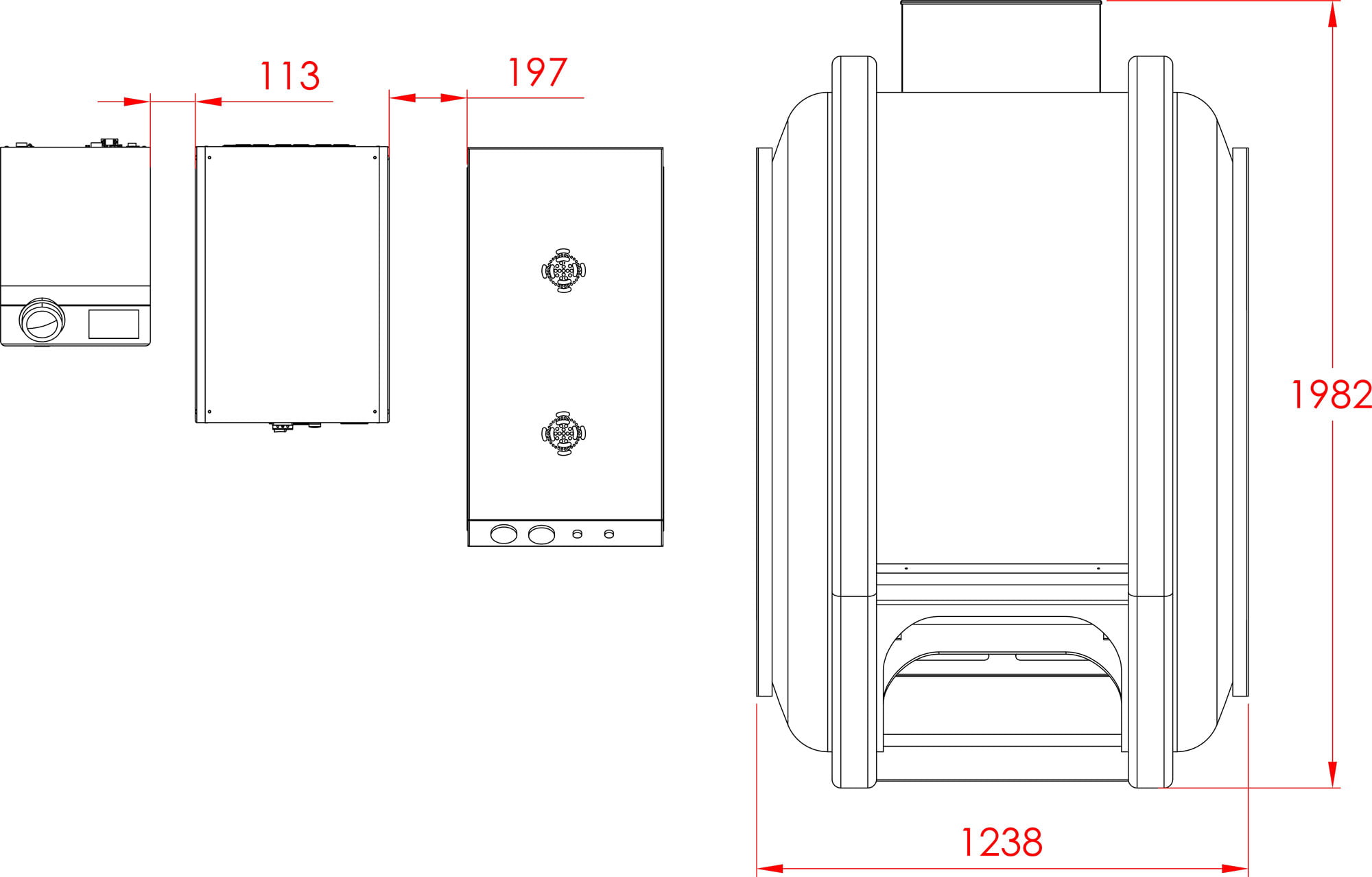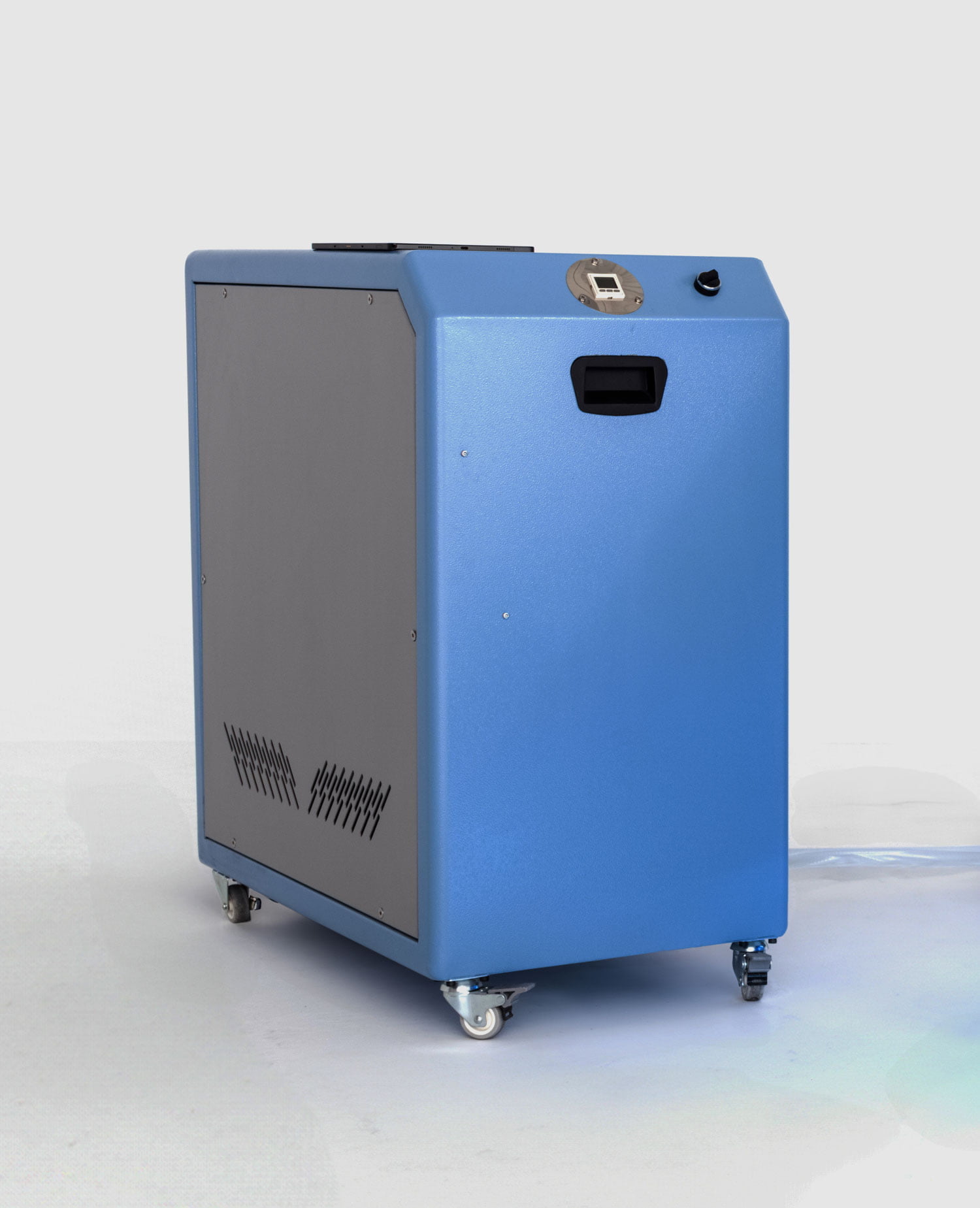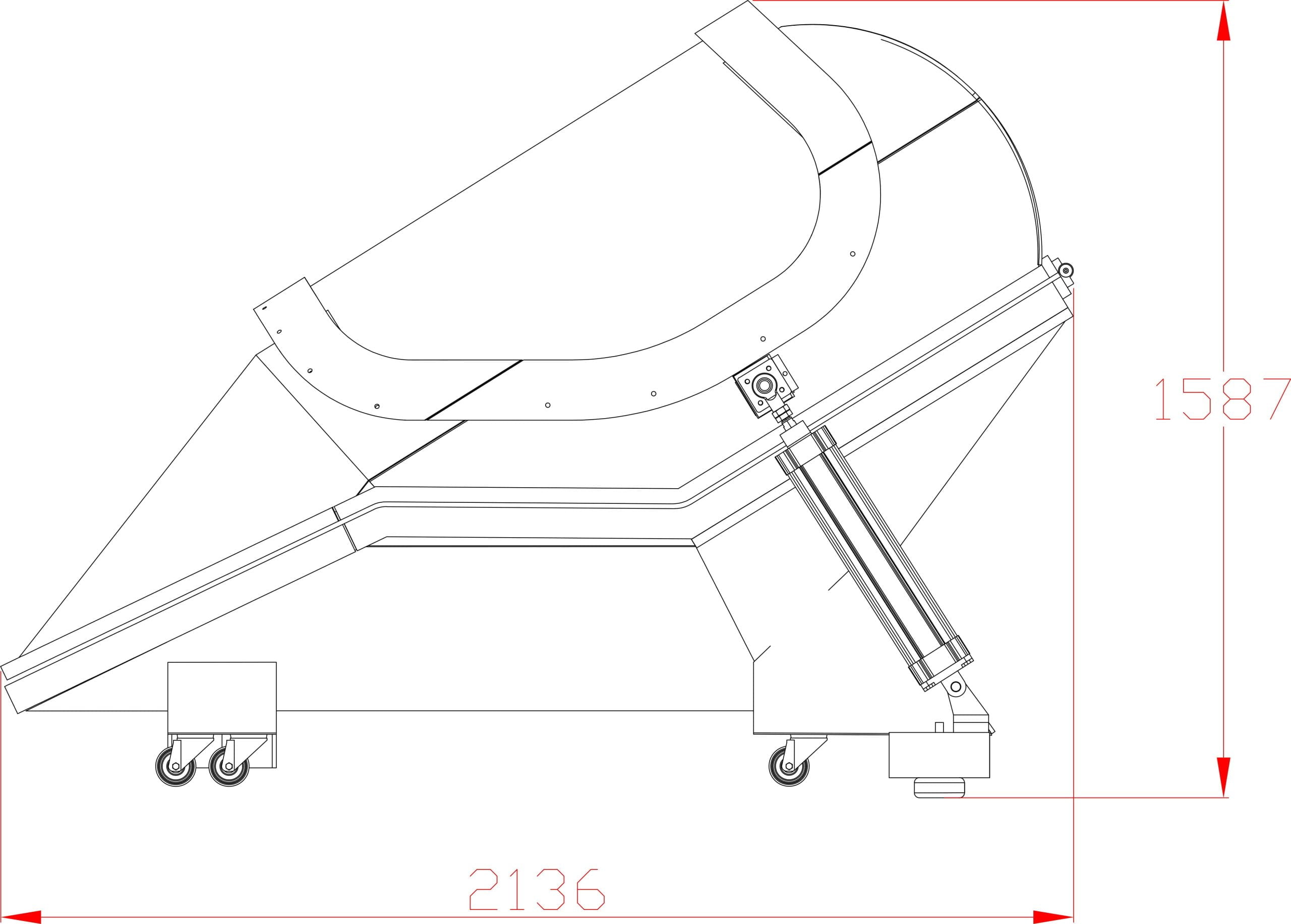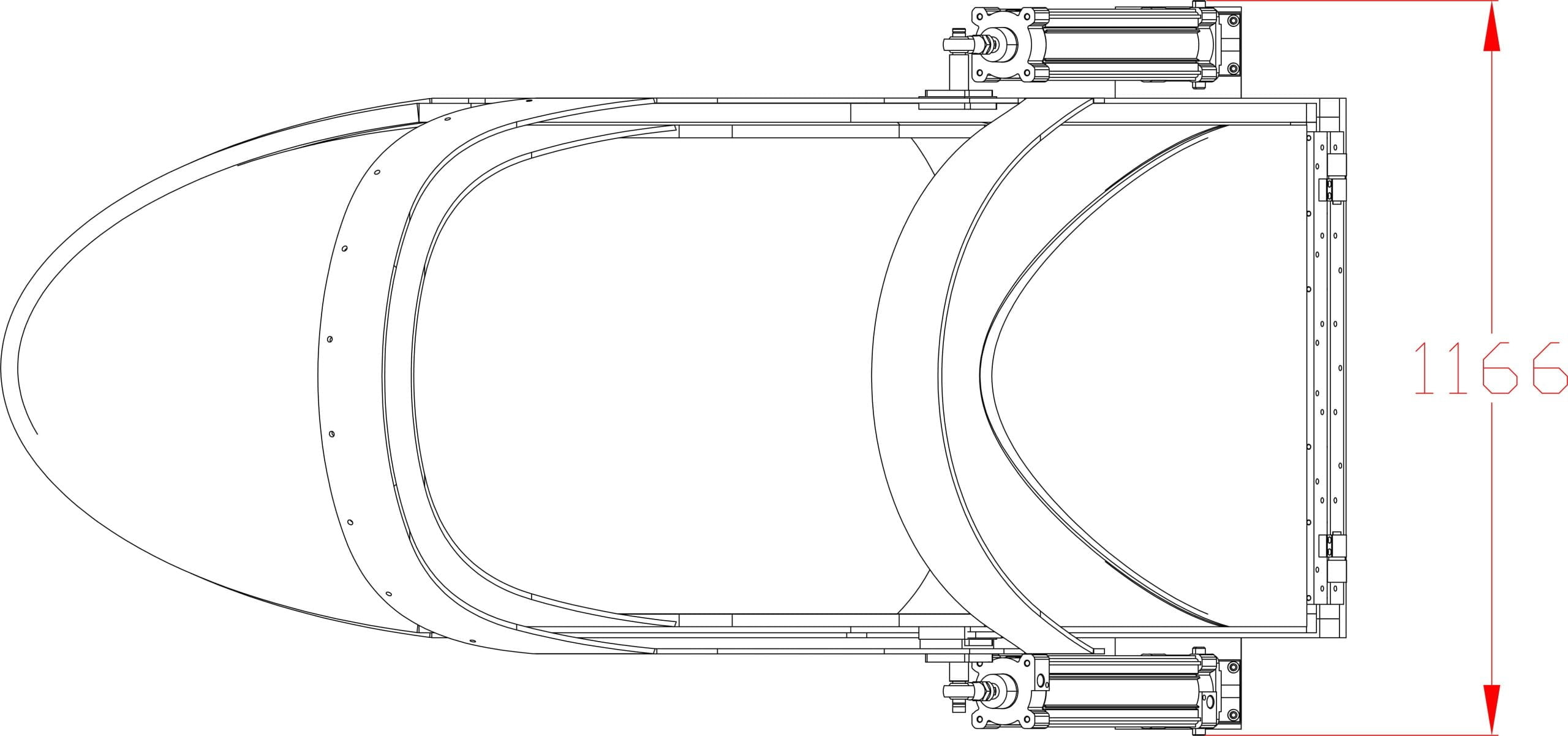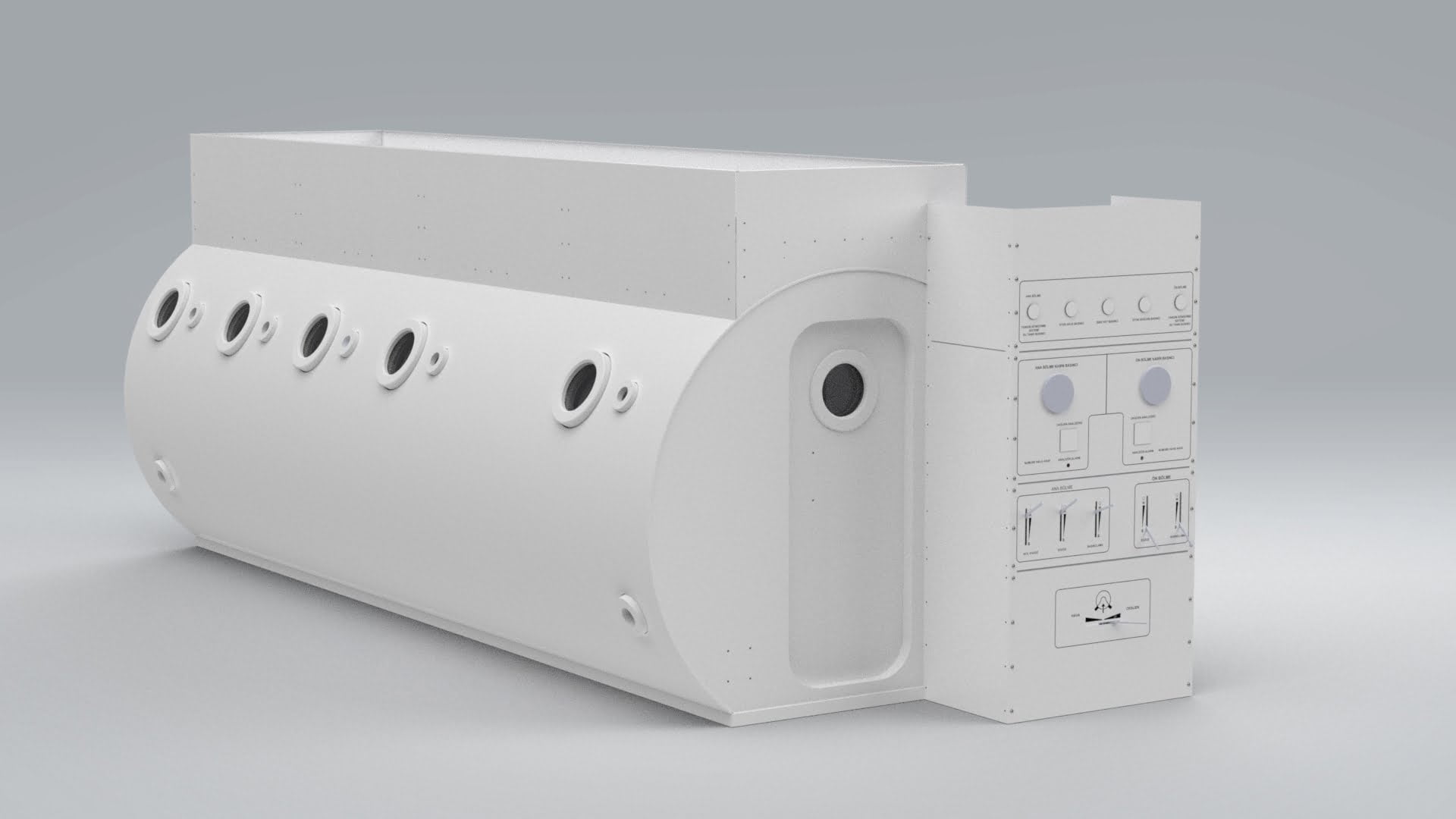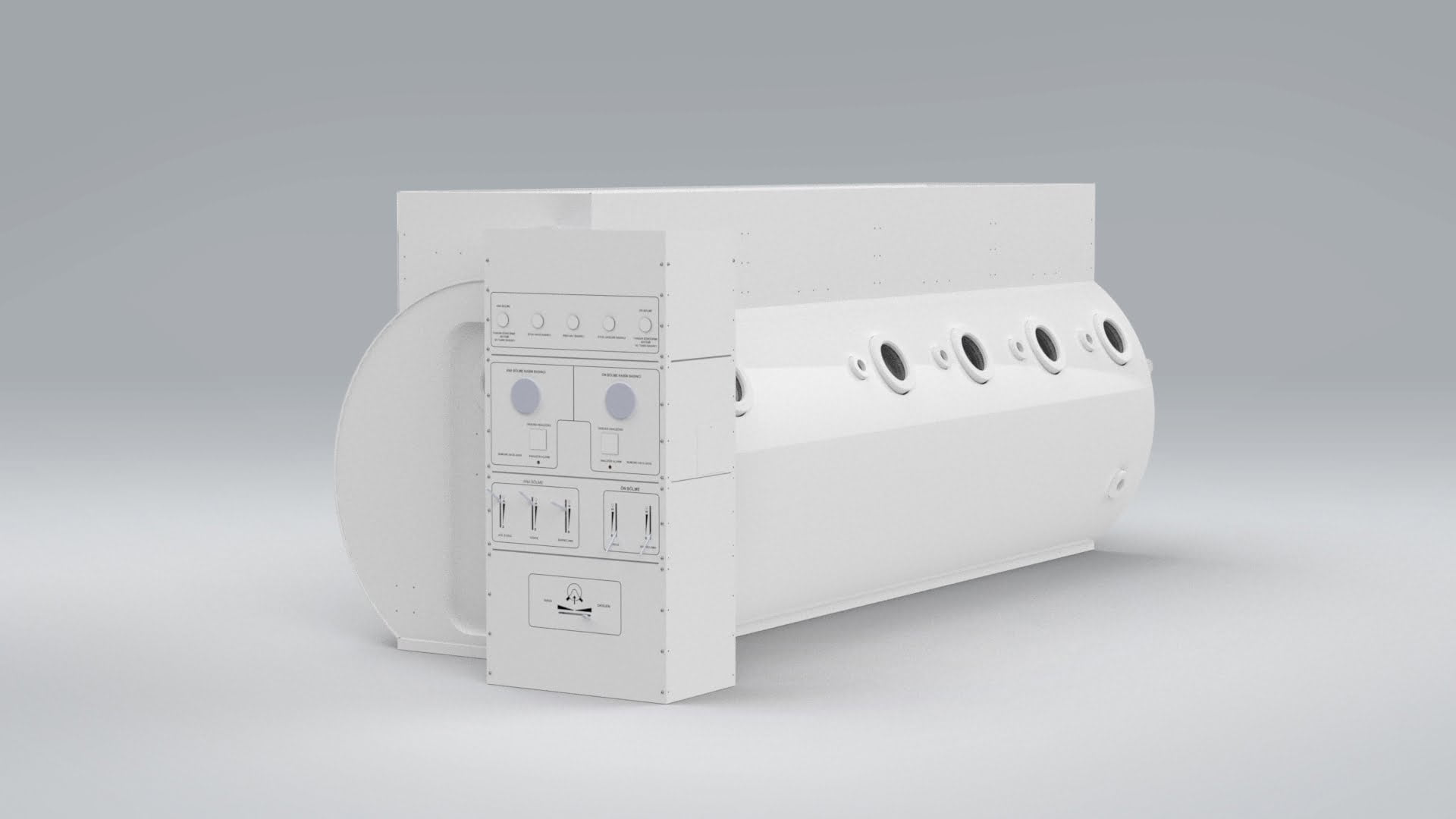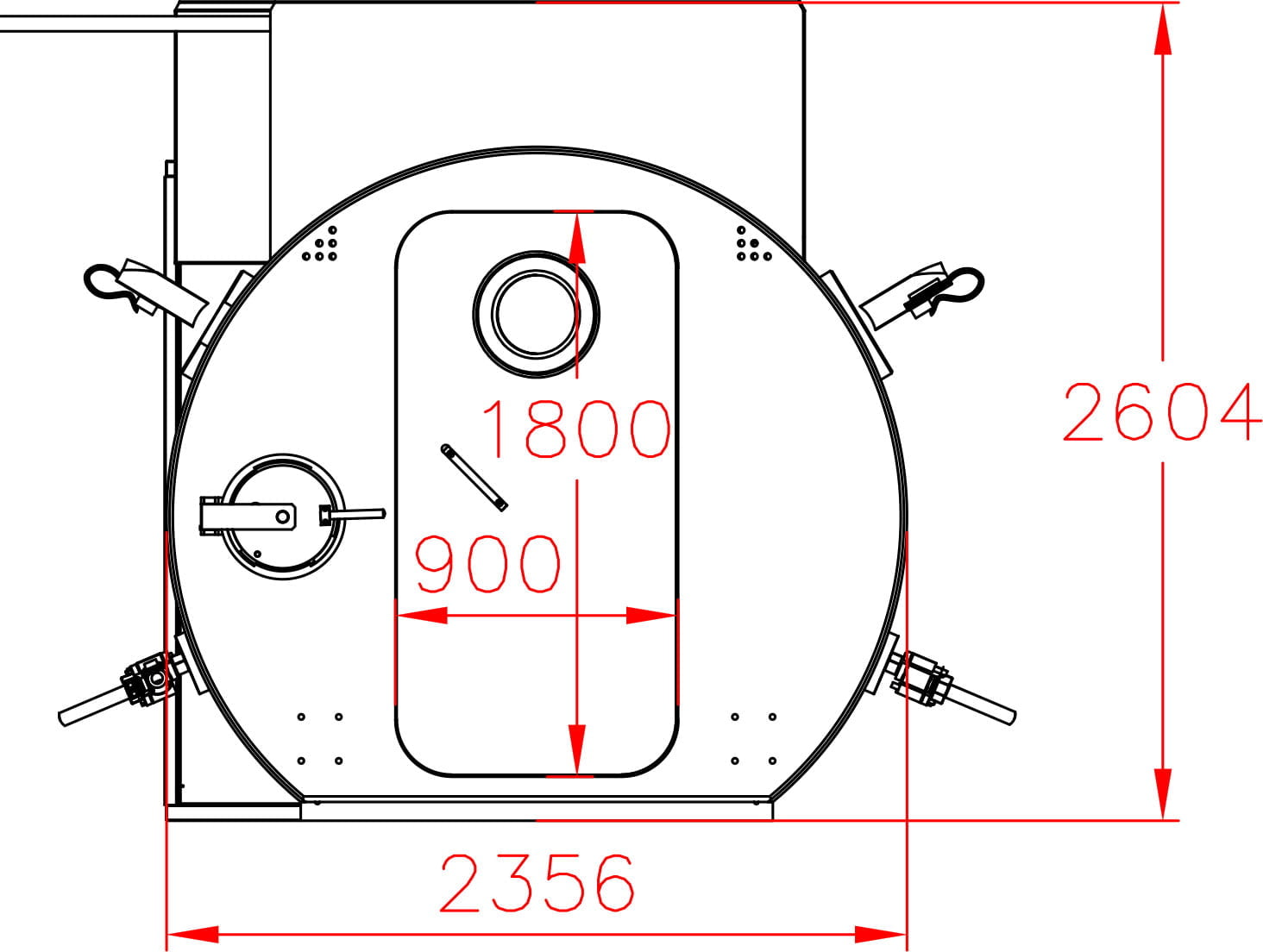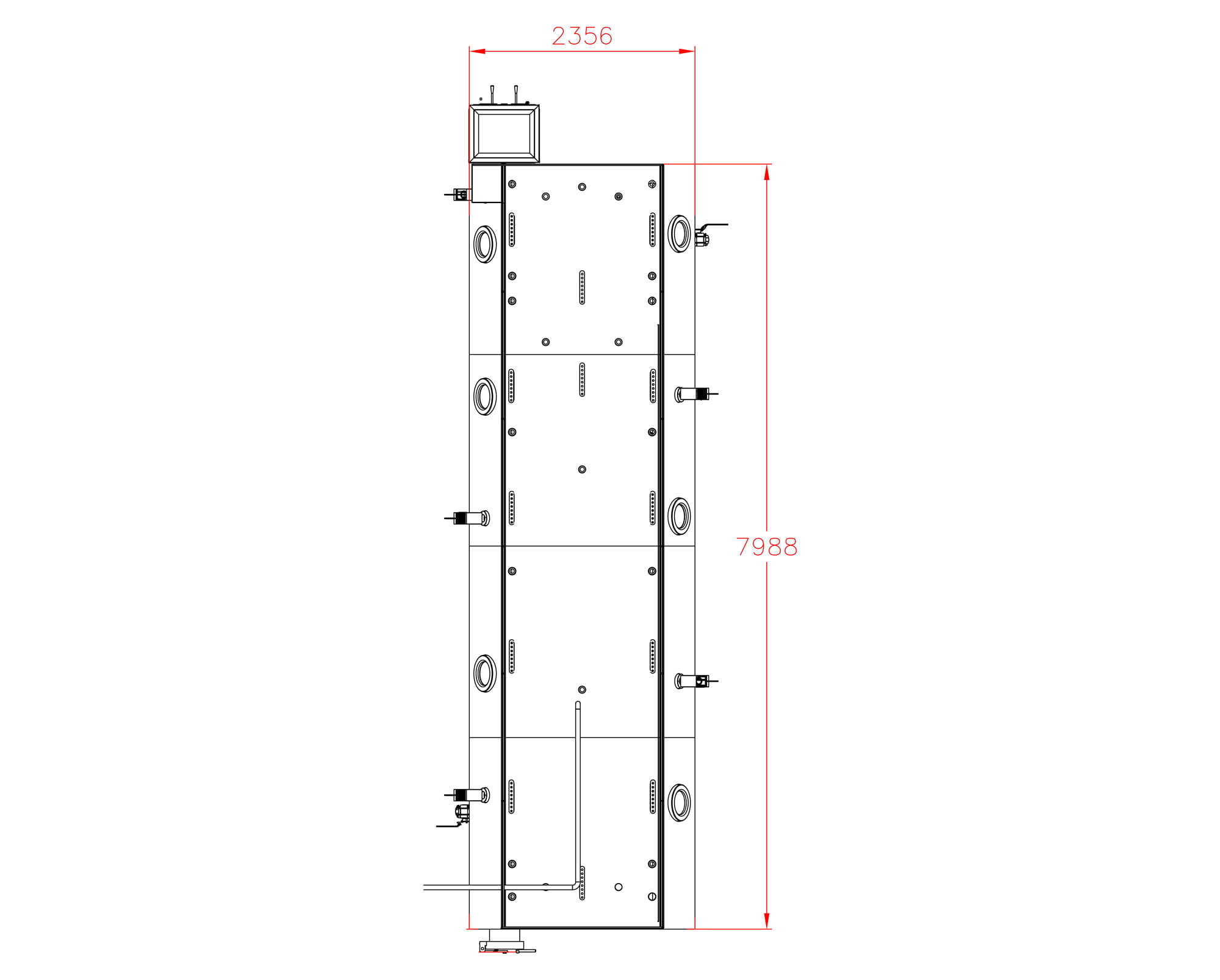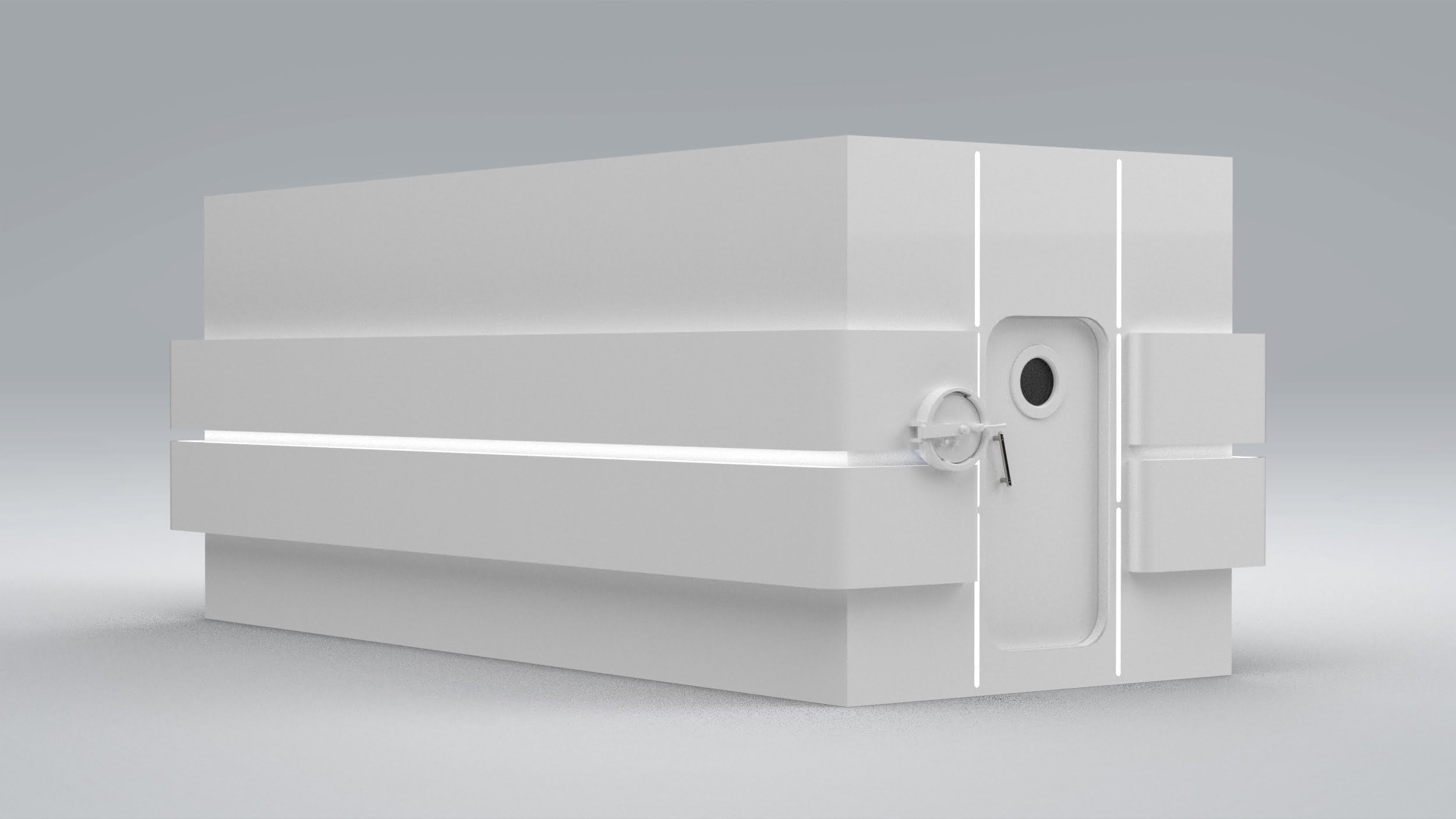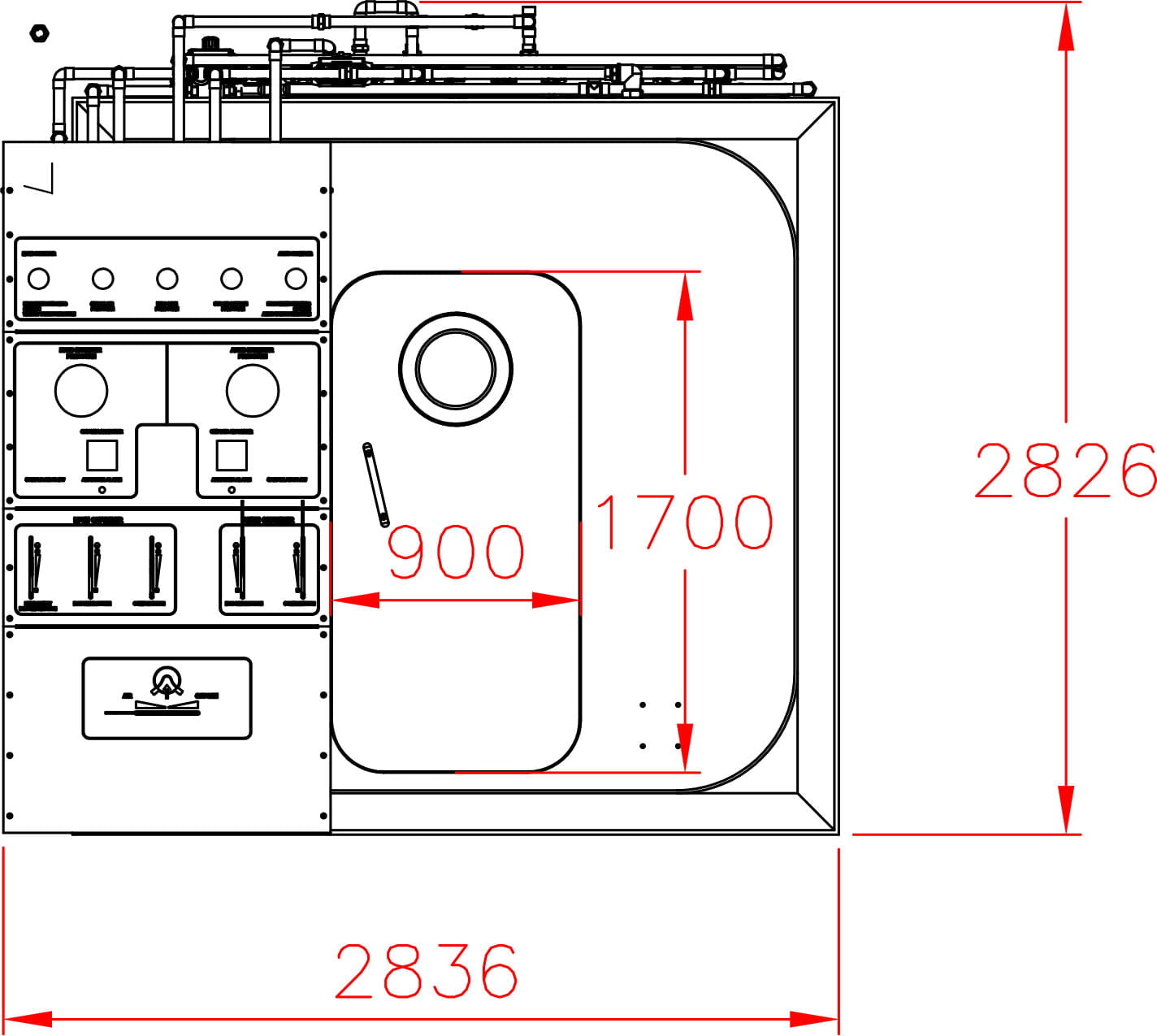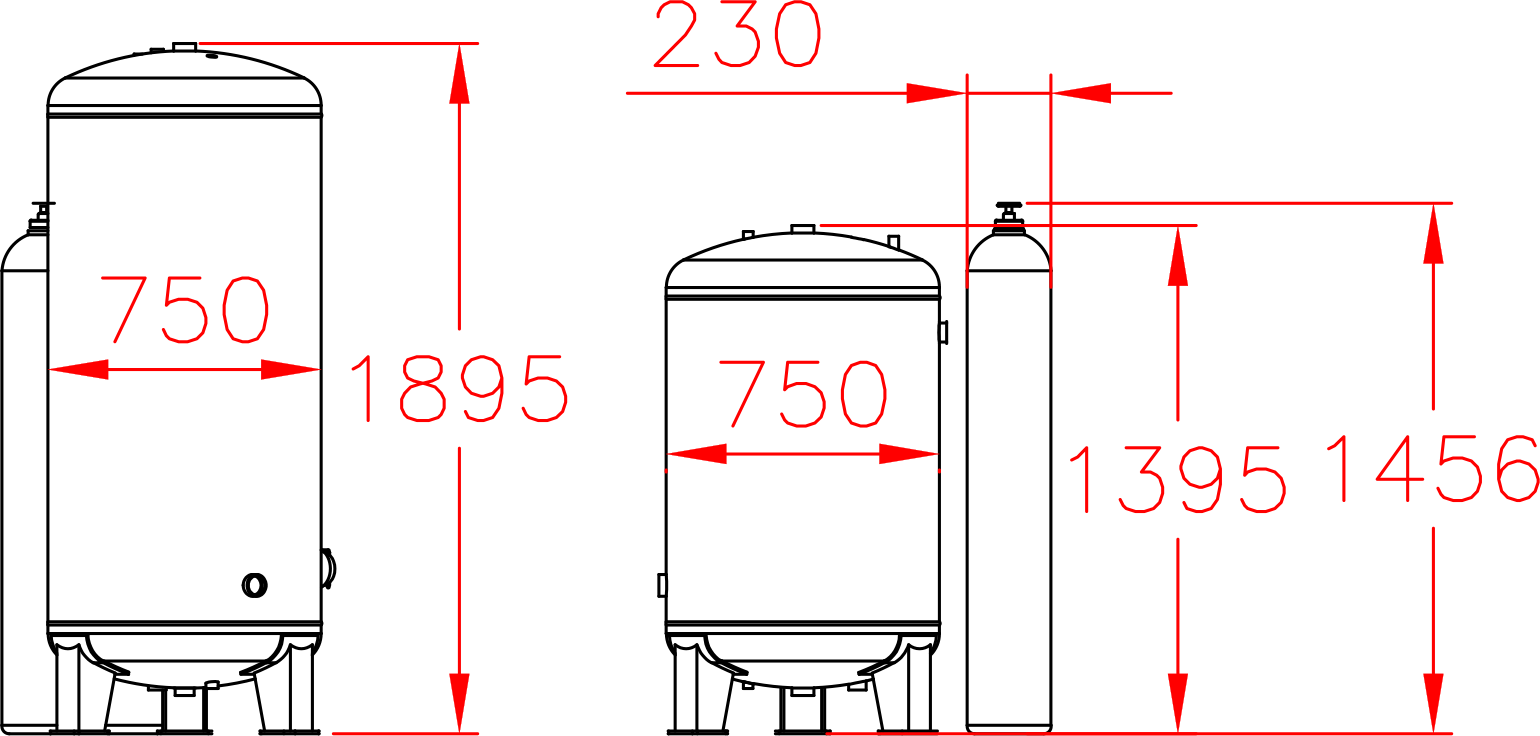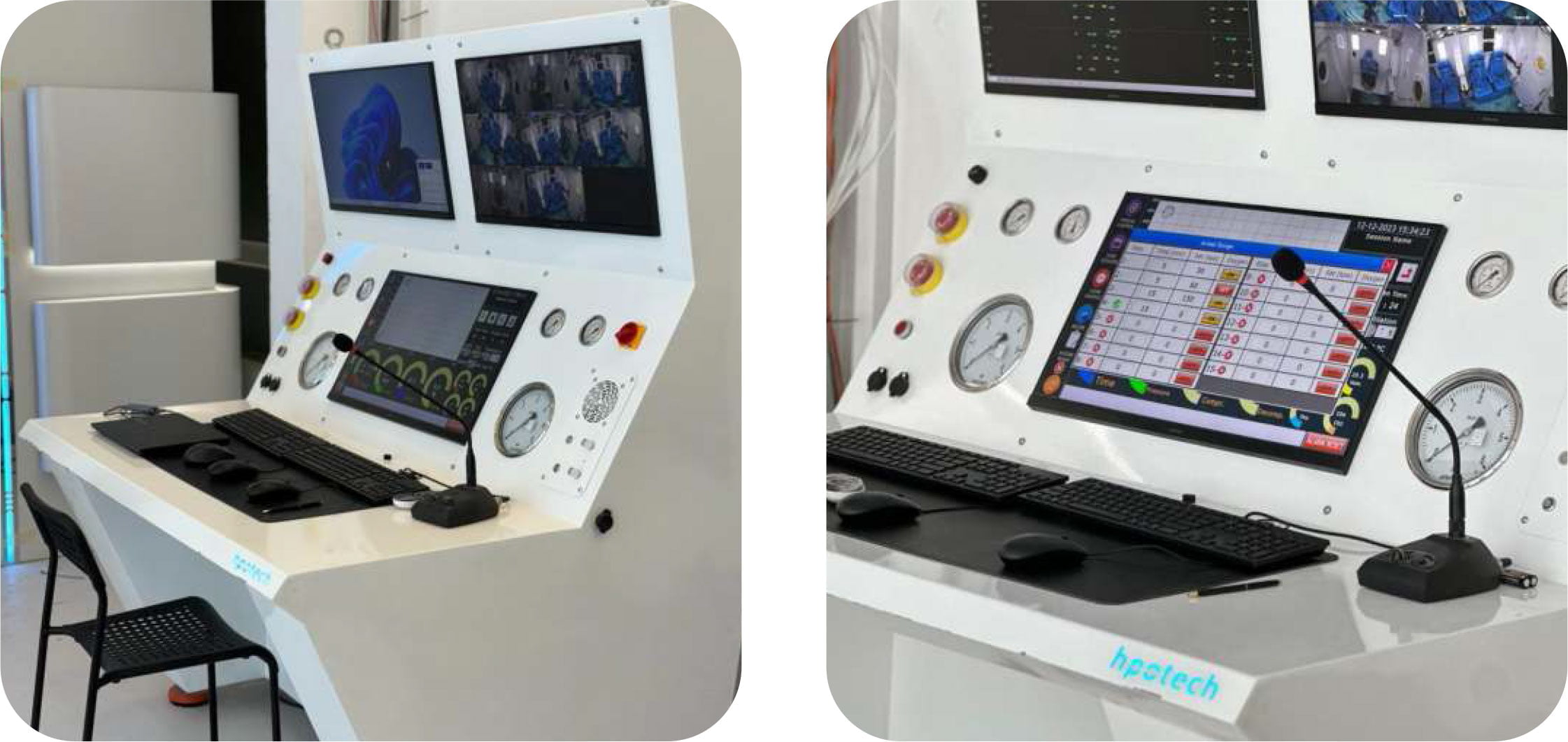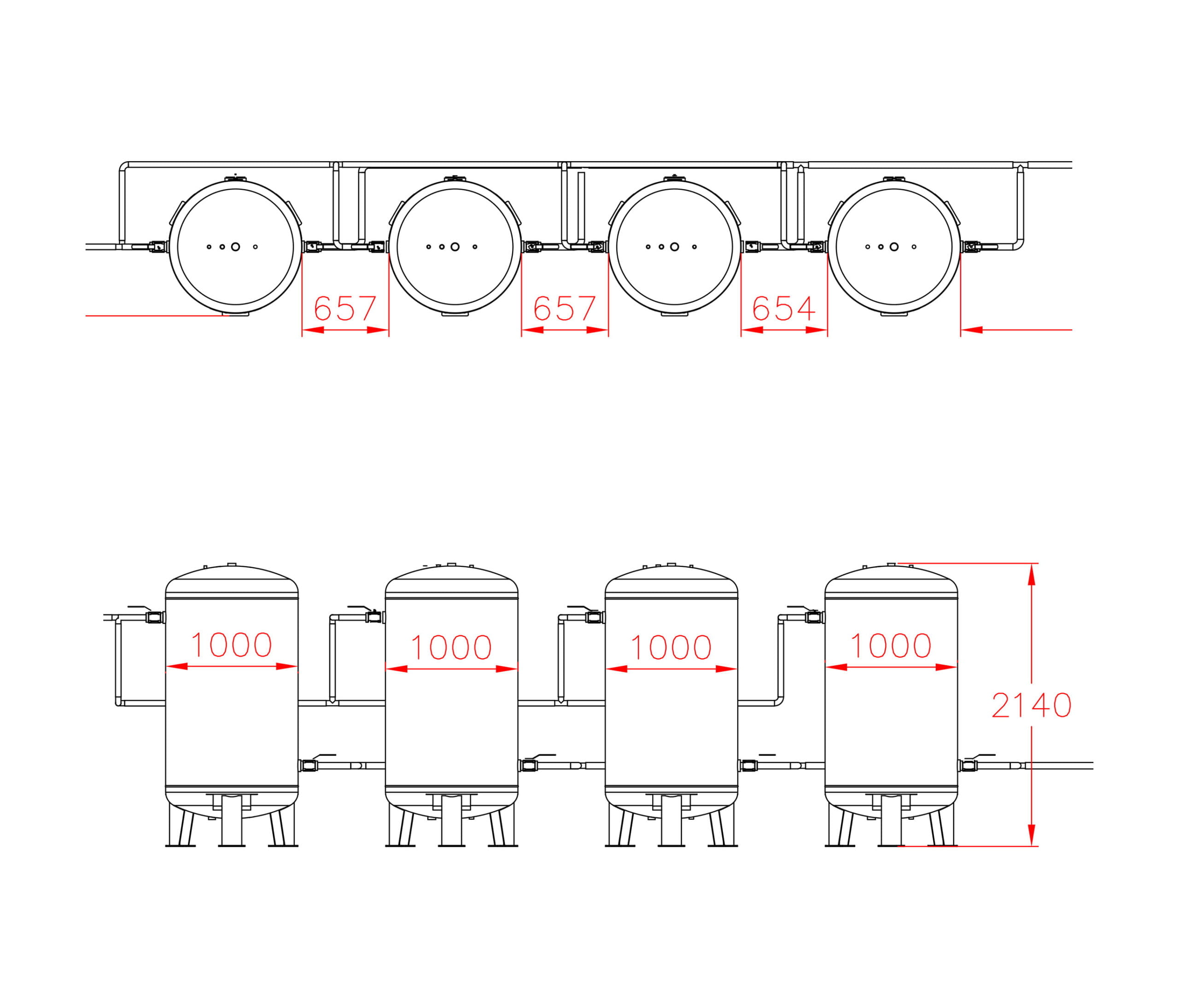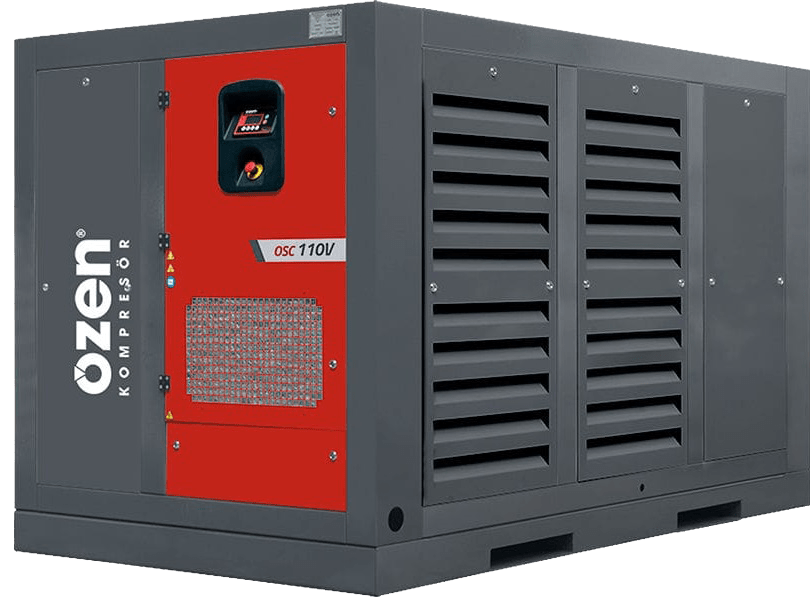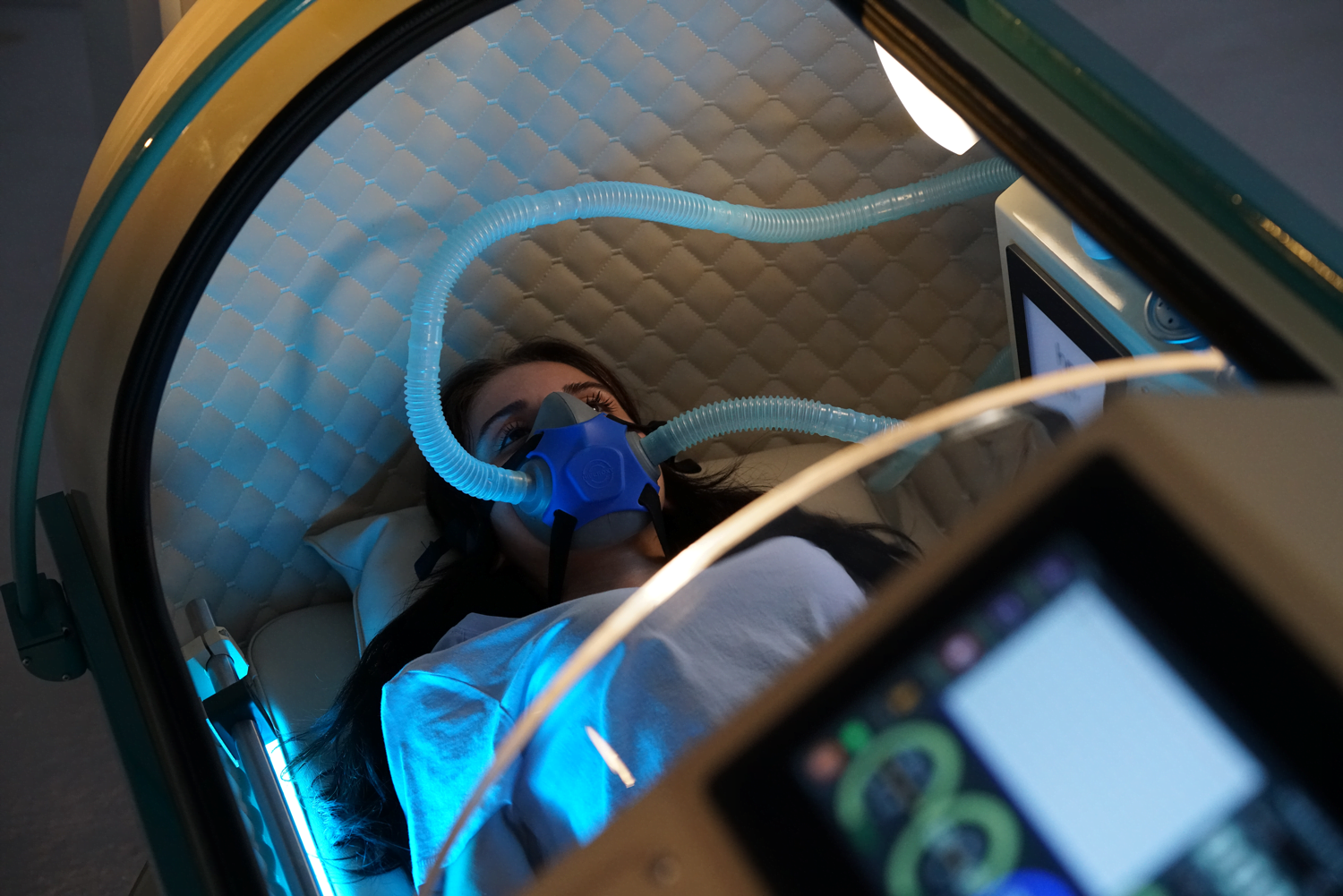Biomarkers under pressure.
Tech entrepreneur and true biohacker Bryan Johnson recently concluded a comprehensive and data-driven self-experiment with hyperbaric oxygen therapy (HBOT). The case study was documented on Bryan’s profile on the X social network.
These are his results.
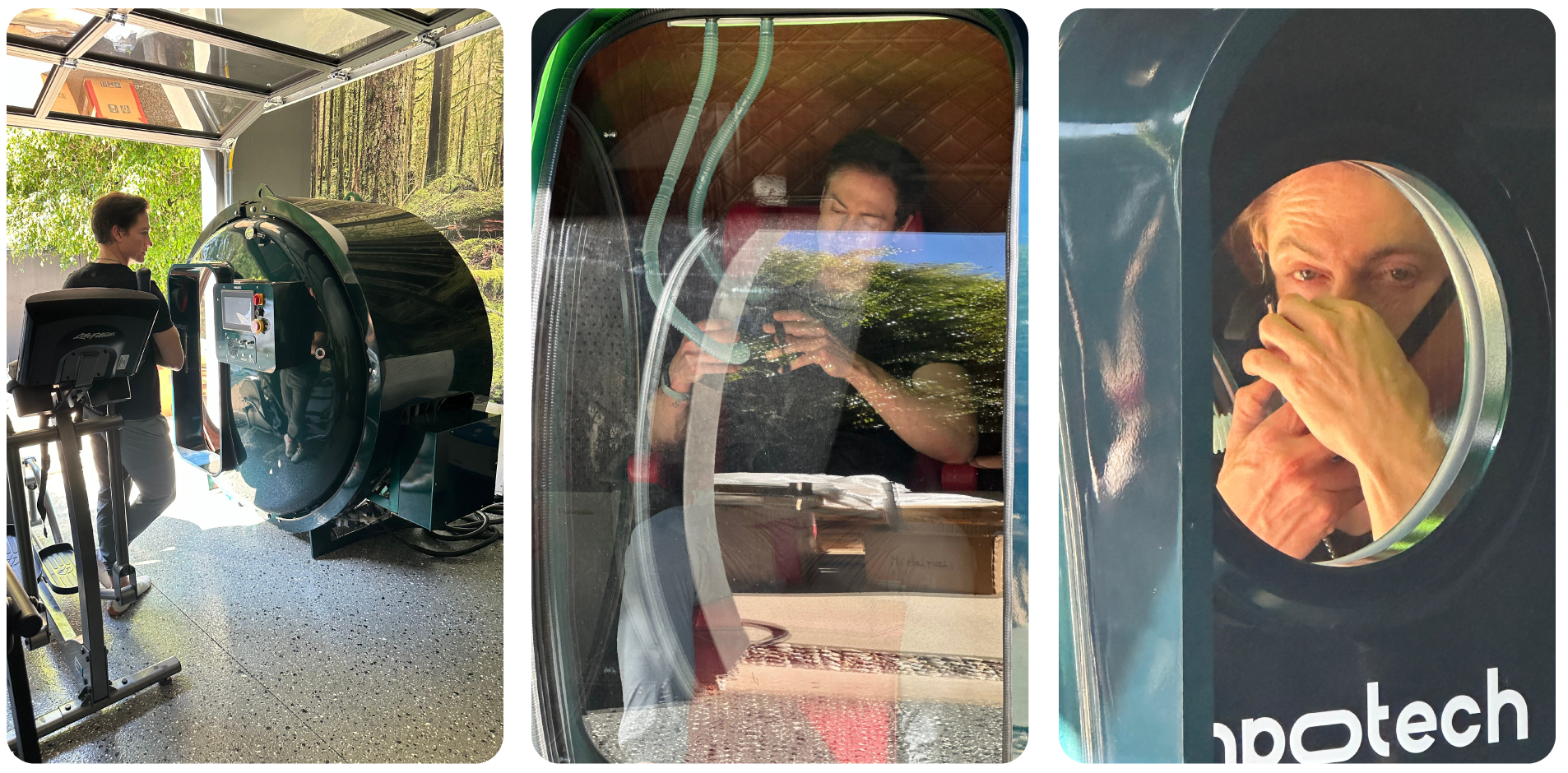
Conducted in a hard-shell ZEUGMA hyperbaric chamber by HpoTech, Johnson followed a 60-session protocol over 90 days. These much-awaited results offer a detailed case study on HBOT’s potential role in longevity and health optimization.
HBOT protocol summary
Bryan’s structured study mirrors peer-reviewed HBOT protocols for longevity, most notably the one developed by Dr. Shai Efrati. This clinically validated protocol has shown measurable improvements in cognitive performance, telomere length, and key markers of biological aging.
Chamber: ZEUGMA by HpoTech
Pressure: 2.0 ATA
Duration: 90-minute sessions
Oxygen cycle: 20 min oxygen, 5 min break, repeated
Total sessions: 60 over 90 days
In this short interview from the Don’t Die Summit in Miami (March 22), Bryan Johnson sits down with Jordan Mulligan of the Mulligan Brothers to share key insights into his hyperbaric oxygen therapy (HBOT) protocol and the broader health strategy behind his longevity experiment.
Can hyperbaric oxygen therapy improve the aging process?
Bryan Johnson’s experiment offers valuable insights into how biomarkers can reflect improvements and challenges in our health while highlighting the complexities of longevity science. Through his detailed approach, Bryan Johnson explores HBOT as a potentially transformative therapy but also encourages us to rethink our understanding of aging, driven by data, discipline, and curiosity.
As HBOT starts becoming a cornerstone of longevity research, this experiment contributes to the wider conversation on human optimization, scientific exploration, and the future possibilities for extending healthspan.
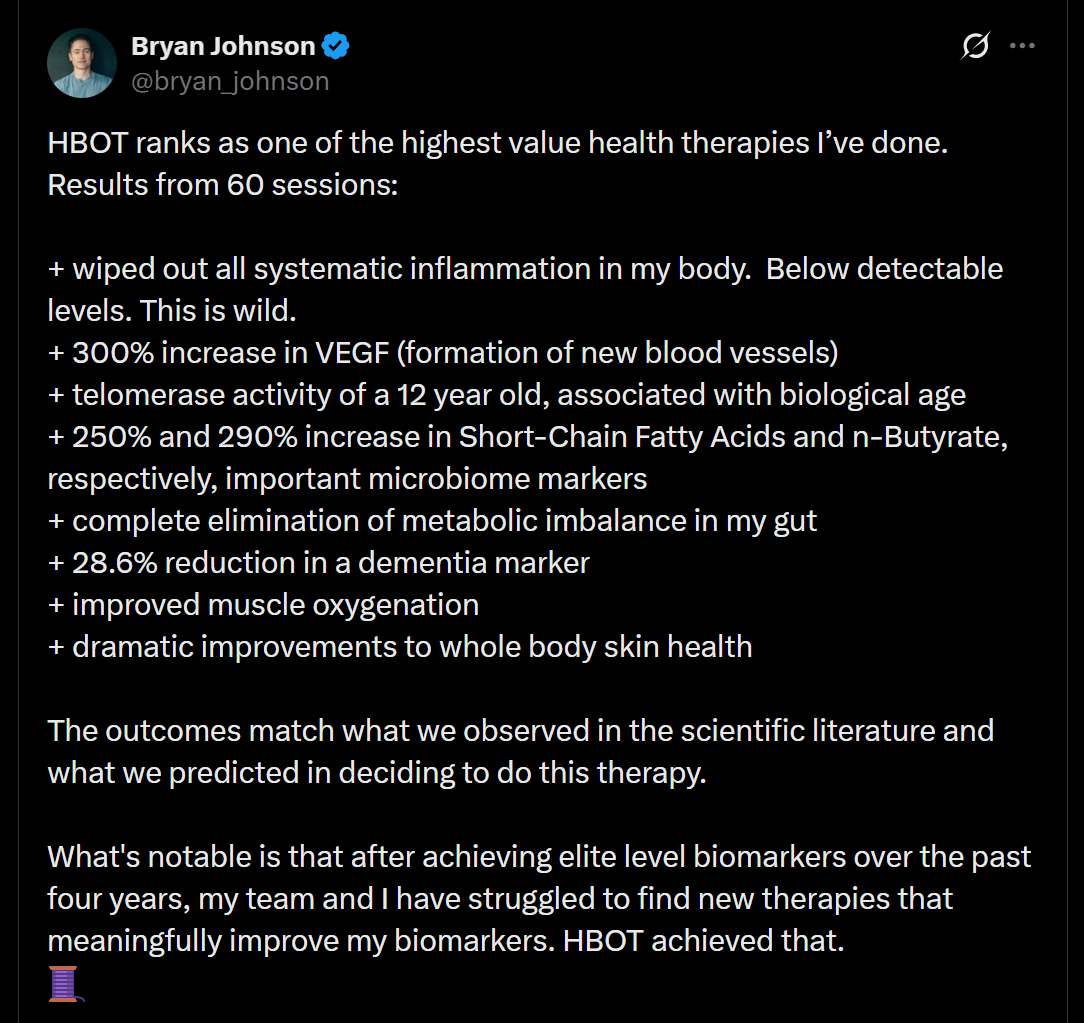
Background: Bryan Johnson’s HBOT longevity experiment
The HBOT protocol was inspired by existing research on telomere lengthening and aging biomarkers. Bryan’s structured study was to analyze HBOT’s impact on a wide spectrum of physiological domains, including epigenetic aging, inflammation, cognitive performance, physical fitness, and gut health.
Data collection involved a battery of tools: epigenetic clocks (including DunedinPACE), neuroimaging, VO2 max testing, gut microbiome sequencing, and blood biomarkers related to inflammation and oxidative stress. While anecdotal in nature, the experiment reflects an effort to bridge biohacking enthusiasm with structured self-science.
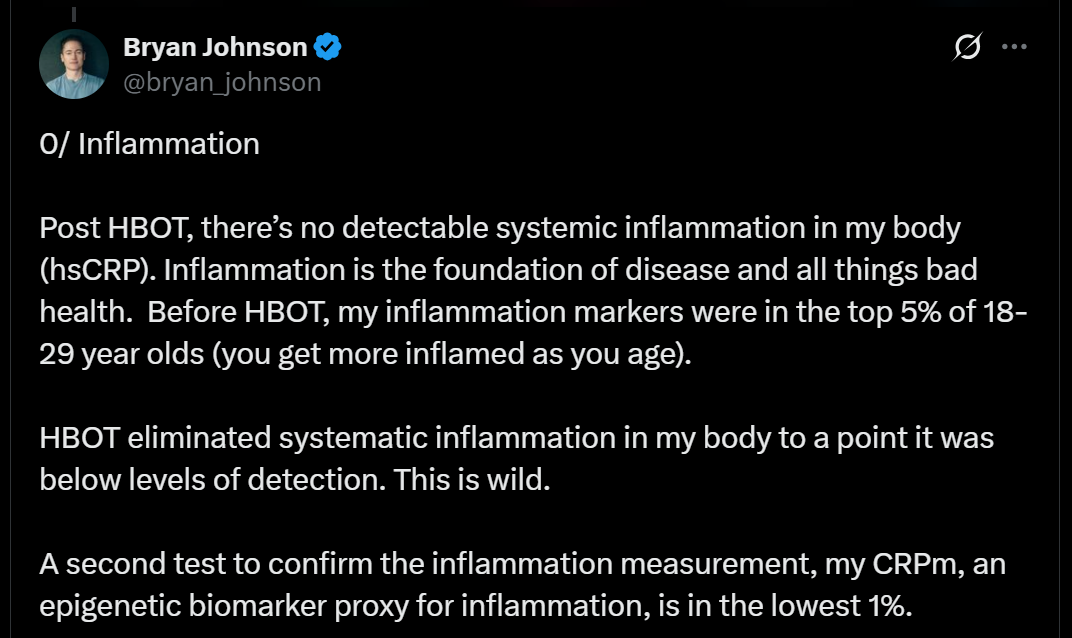
Systemic inflammation: reduced to undetectable levels
Chronic inflammation is closely linked to age-related diseases. Bryan’s baseline inflammation levels were already low, placing him in the top 5% of 18–29-year-olds. Following HBOT, his hsCRP levels fell below detectable limits, and his CRPm score, an epigenetic marker for inflammation, was among the lowest measured. These results suggest a significant modulation of immune and inflammatory activity.
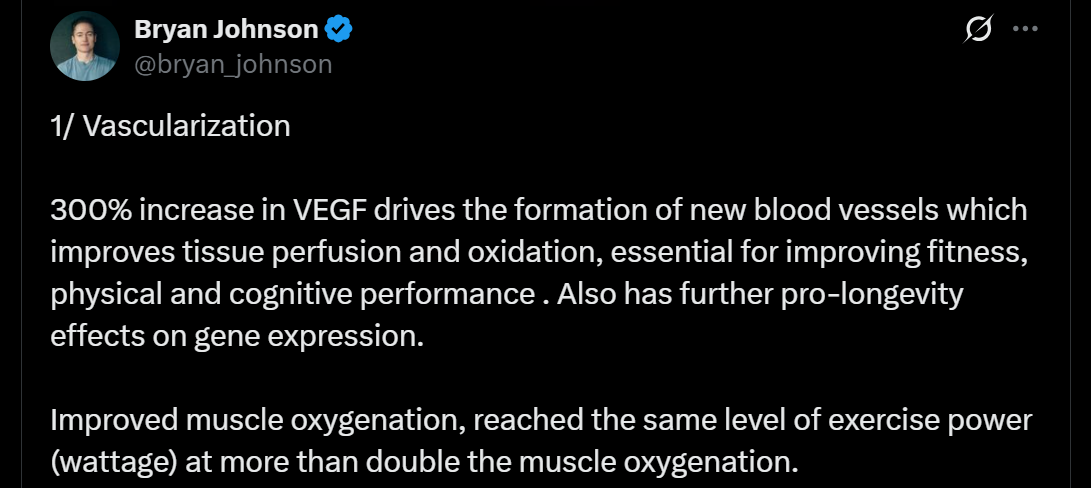
Improvements in vascularization & muscle oxygenation
A 300% rise in VEGF (vascular endothelial growth factor) suggests enhanced blood vessel formation and oxygen delivery. Bryan also recorded improved muscle oxygenation during exercise, reaching previous power outputs with greater efficiency. These changes are consistent with improved tissue perfusion and cellular metabolism.
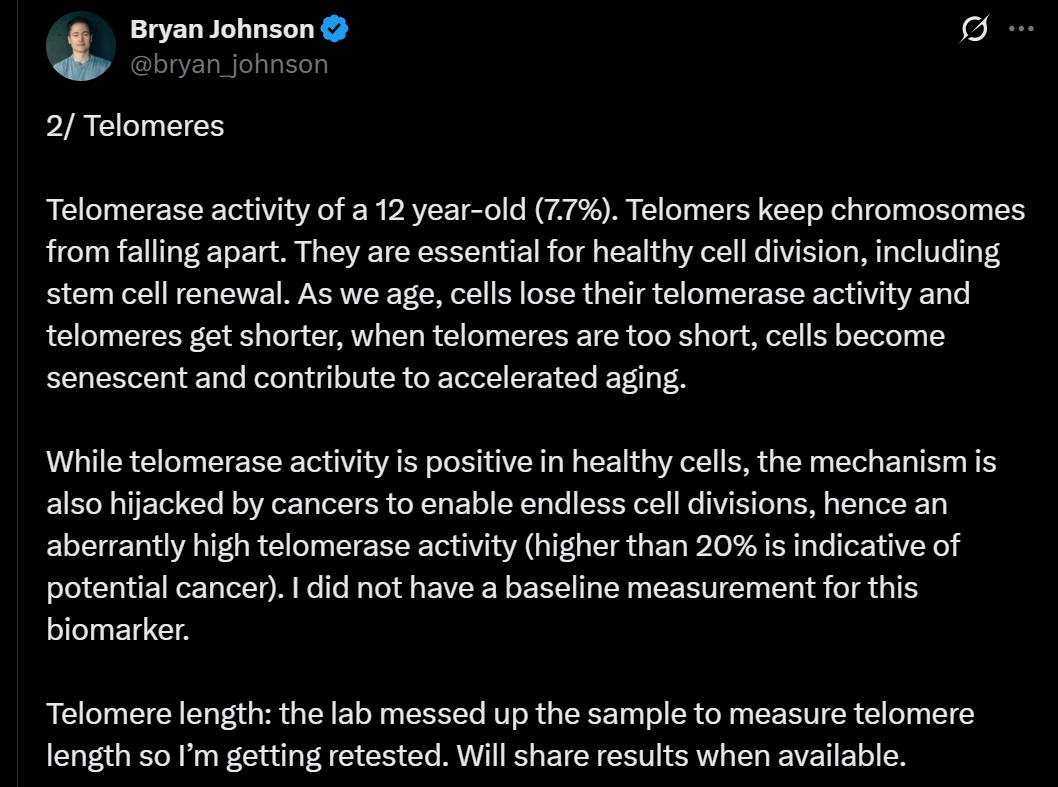
Telomerase activity & cellular aging
Bryan’s telomerase activity was measured at 7.7%, a level typically seen in adolescents. Telomerase supports chromosomal stability and healthy cell replication. While the exact implications require further study, this result may point to a favorable shift in cellular aging dynamics.
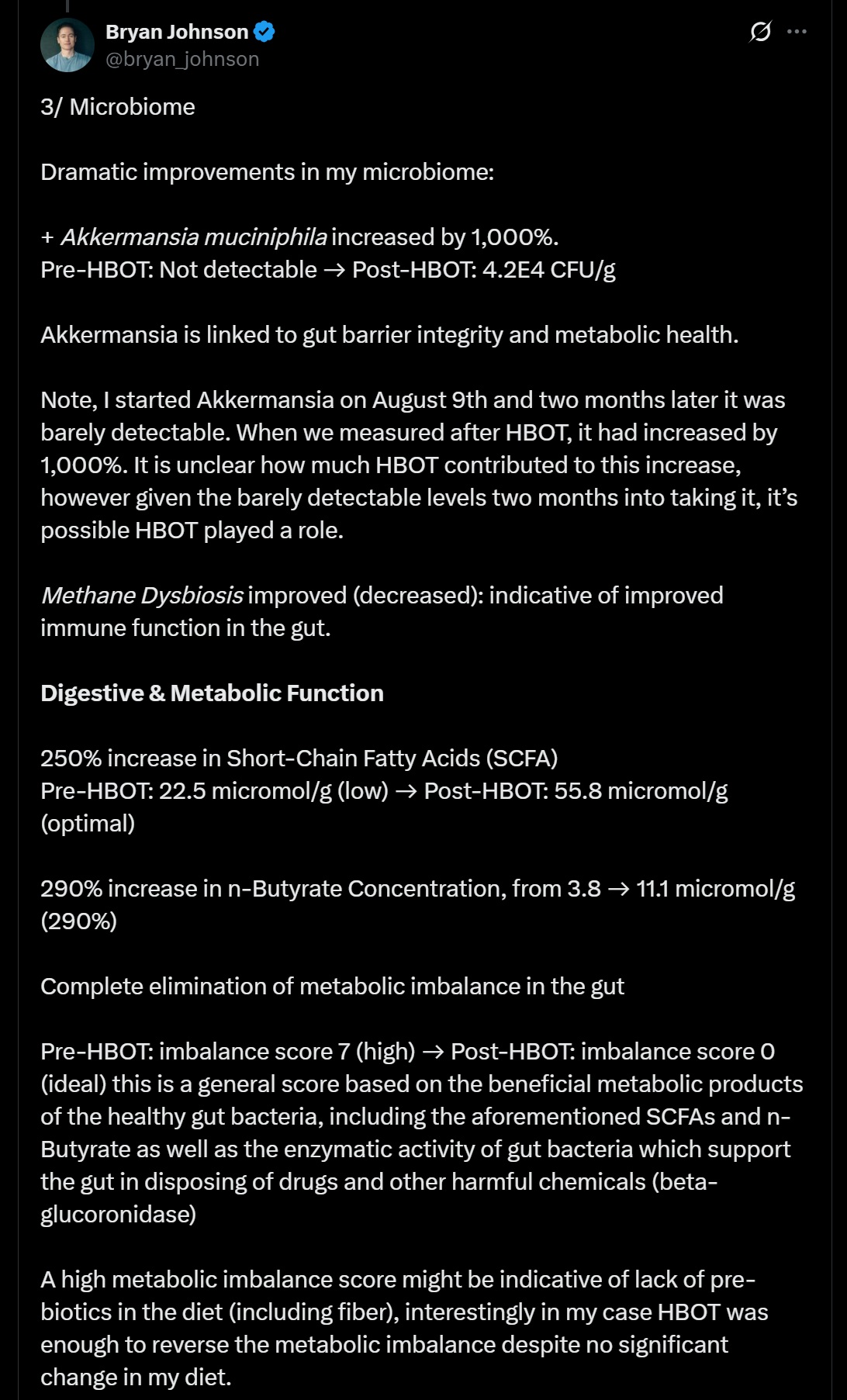
Positive shifts in the gut microbiome
While HBOT is traditionally associated with tissue repair, oxygenation, and cognitive performance, a lesser-explored outcome of this experiment was its potential impact on the gut microbiome, a key player in systemic health, immunity, mood regulation, and aging.
The results revealed remarkable shifts in gut health biomarkers, especially since no changes were made to diet, supplements, or lifestyle routines during treatment. This isolates HBOT as the likely catalyst for the following outcomes:
- Short-chain fatty acids (SCFAs), which are critical for immune regulation, gut barrier integrity, and anti-inflammatory effects, rose by 250%.
- n-Butyrate, a specific SCFA linked to colon health, insulin sensitivity, and neurological benefits, increased by 290%, suggesting enhanced microbial fermentation and a healthier gut lining.
- Akkermansia muciniphila, a keystone microbial species often absent in dysbiosis and associated with improved metabolic function and gut barrier strength, became detectable in meaningful quantities after previously being absent.
- A composite metabolic imbalance score, which reflects overall gut microbial function and diversity, improved from 7 to 0, signaling a complete normalization and balance in gut health metrics.
The outcomes align with growing research suggesting that enhanced tissue oxygenation and reduced oxidative stress can create a more hospitable environment for beneficial gut bacteria, particularly anaerobic species involved in energy and immune regulation.
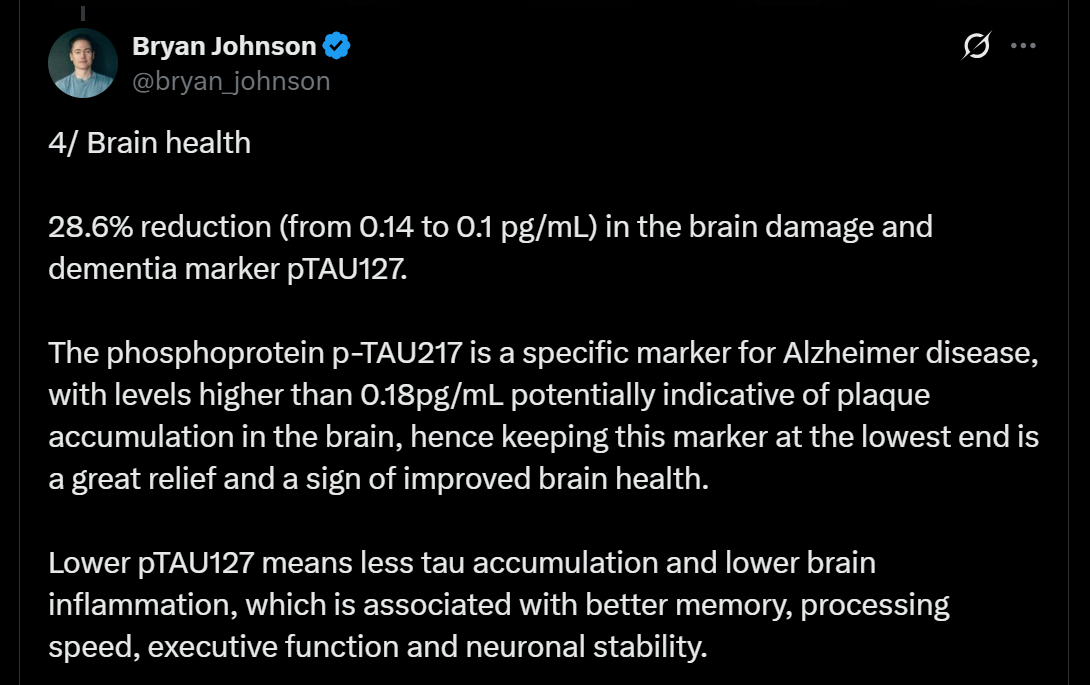
Brain health
Levels of the brain health marker pTAU127 decreased by 28.6% (from 0.14 to 0.10 pg/mL). Elevated pTAU levels are linked to neurodegeneration, so this reduction could reflect improved neuronal stability and reduced inflammation. While promising, the data remains observational.
pTAU127 ↓ 28.6%: This marker, associated with Alzheimer’s, dropped significantly, suggesting reduced brain inflammation and potentially lower dementia risk. That’s especially notable given Bryan’s age and existing health optimization.
Skin metrics: modest but noticeable changes
Bryan reported a reduction in measured skin age (from 39 to 38) and improved UV spot scores. Although he referenced additional benefits found in prior clinical studies, including improved collagen density and blood vessel formation, these specific metrics were not measured in his experiment. Nonetheless, significant subjective improvement in skin quality have been noted.
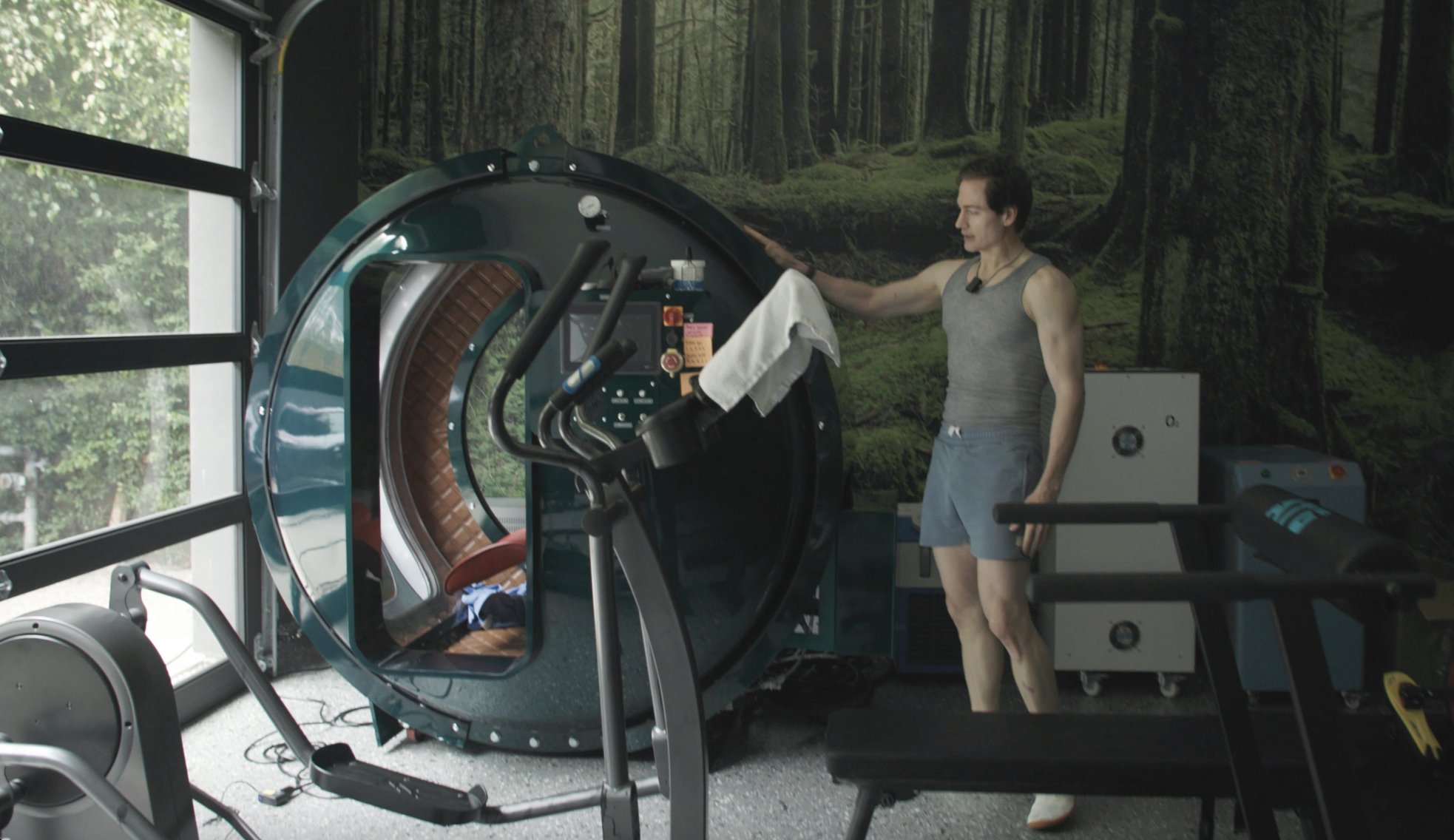
Biological aging wiht a focus on epigenetic clocks
A key goal of the experiment was to influence biological aging markers such as DunedinPACE and DNAmAge. A score of 1.0 on DunedinPACE equates to aging one year per calendar year; lower values suggest a slower pace of aging. Johnson monitored how HBOT could potentially shift this trajectory, with supportive findings in DNA methylation patterns and organ-specific aging scores.
Limitations: Bryan also underwent three total plasma exchange (TPE) procedures during the trial, which may have contributed to inflammation reduction. As with all single-subject experiments, findings are not generalizable and should be interpreted cautiously.
Practical reflections looking ahead
Bryan Johnson’s HBOT experiment is a glimpse into what’s possible when advanced technology meets radical self-discipline. His data suggests that hyperbaric oxygen therapy could influence key biomarkers tied to aging, recovery, and gut health.
But while the results are promising, they’re just one piece of a larger puzzle. HBOT isn’t a panacea, it’s a tool. And like any tool, its true value lies in how we use it, study it, and integrate it into real-world health strategies.
At its core, this experiment is less about chasing immortality and more about exploring human potential. Bryan’s mantra, “Don’t Die”, may sound extreme, but behind it lies a universal desire: to live better, for longer, and with greater vitality. The journey to longevity optimization continues as we continue to breathe oxygen.

